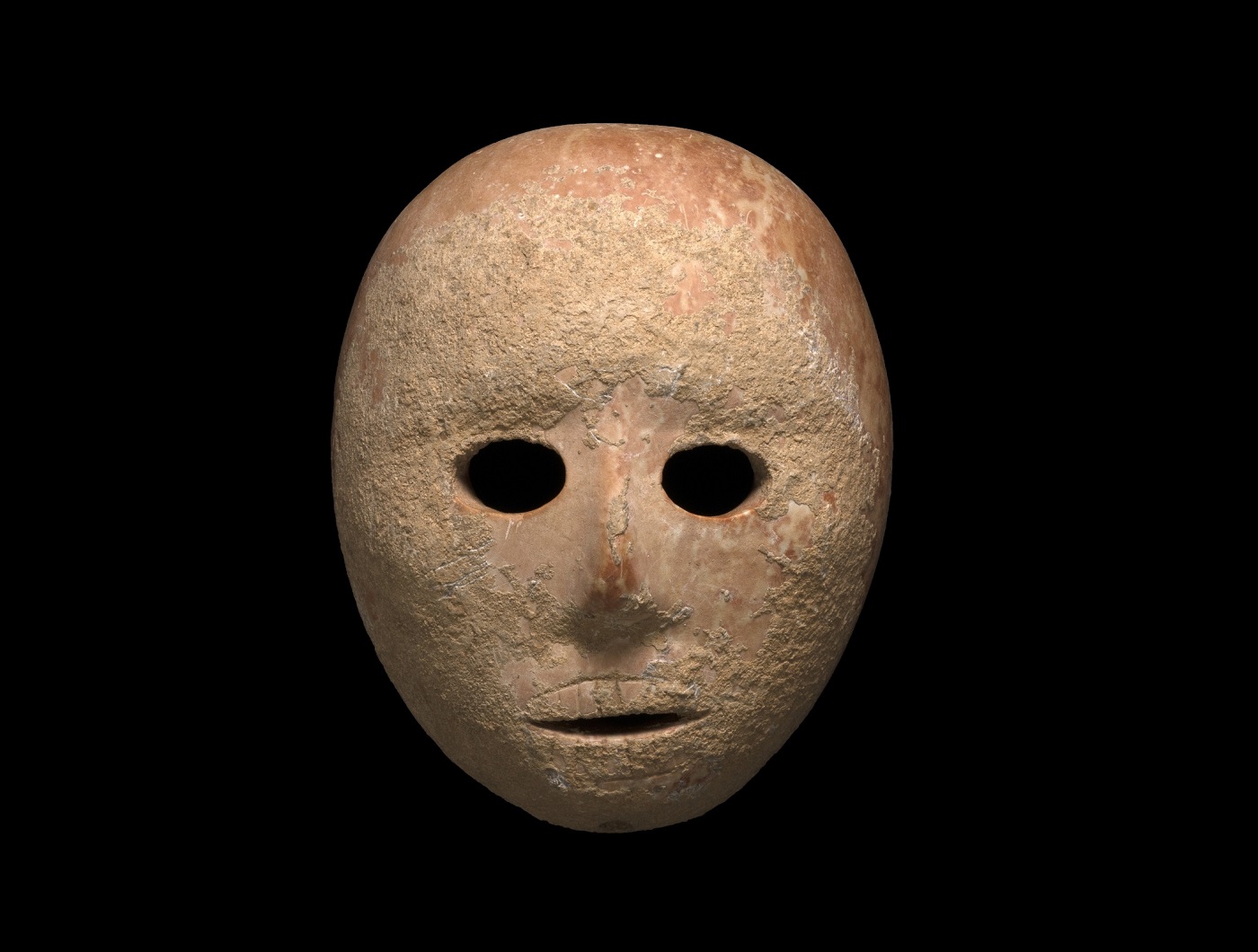A rare stone mask from the Neolithic period has been unveiled for the first time by the Israel Museum in Jerusalem.
The mask was recovered by the Anti-Robbery Unit at the Israel Antiquities Authority (IAA), and transferred to the Archaeology Department of the Civil Administration in Judea and Samaria for further study.
According to a press statement by the IAA, the mask is made of yellow-rose limestone and was crafted during the Neolithic period around 9,000-years-ago.
Ronit Lupo from the IAA, said: “The design of the mask has facial features that are perfect and symmetrical, even shaped cheekbones, an impressive nose, and a mouth showing the teeth”.
Only 16 stone masks from this period have been unearthed, many of which were discovered in the southern area of the Mount Hebron-Jehuda Desert. They all share similar traits and characteristics in their production, suggesting that they belong to the same Pre-Pottery Neolithic B (PPNB) culture group.
People living during this period saw the onset of the Agricultural Revolution and relied heavily upon domesticated animals to supplement their earlier agrarian and hunter-gatherer diet.
PPNB sites found in the Levant feature human skulls covered in layers of plaster or buried beneath the floors of ancient dwellings. According to experts, this type of activity represents an early form of ancestor worship. “These stone masks are somewhat similar to human faces, and so they tend to be linked to this worship,” added Lupo.
The PPNB culture disappeared during the 8.2 kiloyear event, a term that climatologists have adopted for a sudden decrease in global temperatures that occurred approximately 8,200-years-ago and lasted for up to two centuries.
A representative of the IAA explained: “The discovery of the mask confirms our assumption that the southern area of Mount Hebron was a centre for the production of stone masks, and apparently also for religious activity in the Pre-Pottery Neolithic.”
Header Image Credit : Clara Amit
Sources : IAA





